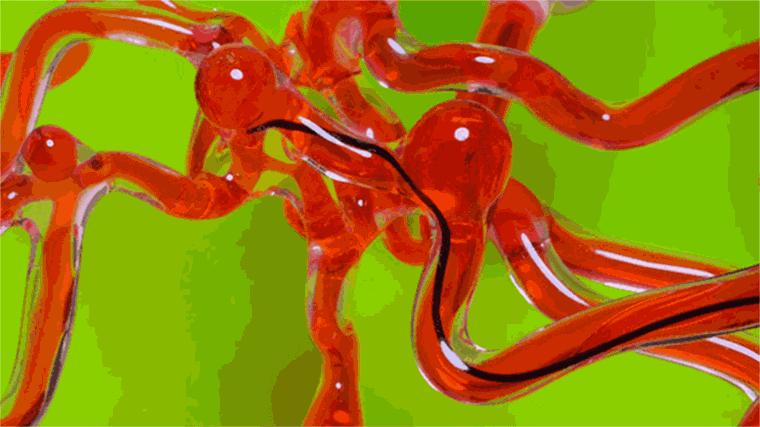Scientists have developed a robotic device that could transform the treatment for strokes, which each year strike 795,000 Americans and kill 140,000. It’s a wormlike robot designed to wend its way through the maze of tiny blood vessels inside the human brain to break up the blood clots causing the stroke and restore the flow of blood.
The clot-busting device, which would open clogged blood vessels with beams of laser light or precisely delivered doses of clot-dissolving medication, is in an early stage of development. But experts hailed the potential of the device, which is described in a paper published Aug. 28 in the journal Science Robotics.
“It could markedly enhance access to clot-retrieval treatments, which at the moment are limited to comprehensive stroke centers,” said Ralph Sacco, chairman of neurology at the University of Miami’s Miller School of Medicine and past-president of the American Heart Association. “It would be a quantum leap … in access to clot retrieval therapy.”
Greater access to effective stroke treatment would mean more patients would be treated during the so-called golden hour, before oxygen-starved brain tissue dies and patients face an increased risk of death or permanent disability.
A new video from the MIT researchers who developed the magnetically steered device shows an early prototype quickly threading its way through a life-size silicone replica of the brain’s mazelike vasculature, which included simulated blood as well as simulated clots and aneurysms — weakened areas of blood vessels that might also be fixable with the new device.
Since the robot is guided by magnets rather than directly by the hands of a doctor with specialized expertise in stroke care — as is the case with conventional clot-retrieval catheters — doctors would be able to steer it from another room or even another hospital. Thus doctors could potentially limit their exposure to the X-rays needed to visualize the tiny blood vessels inside the brain. Patients in areas with limited local medical resources could also receive prompt treatment via telemedicine from specialists at a comprehensive stroke center far away in another city.